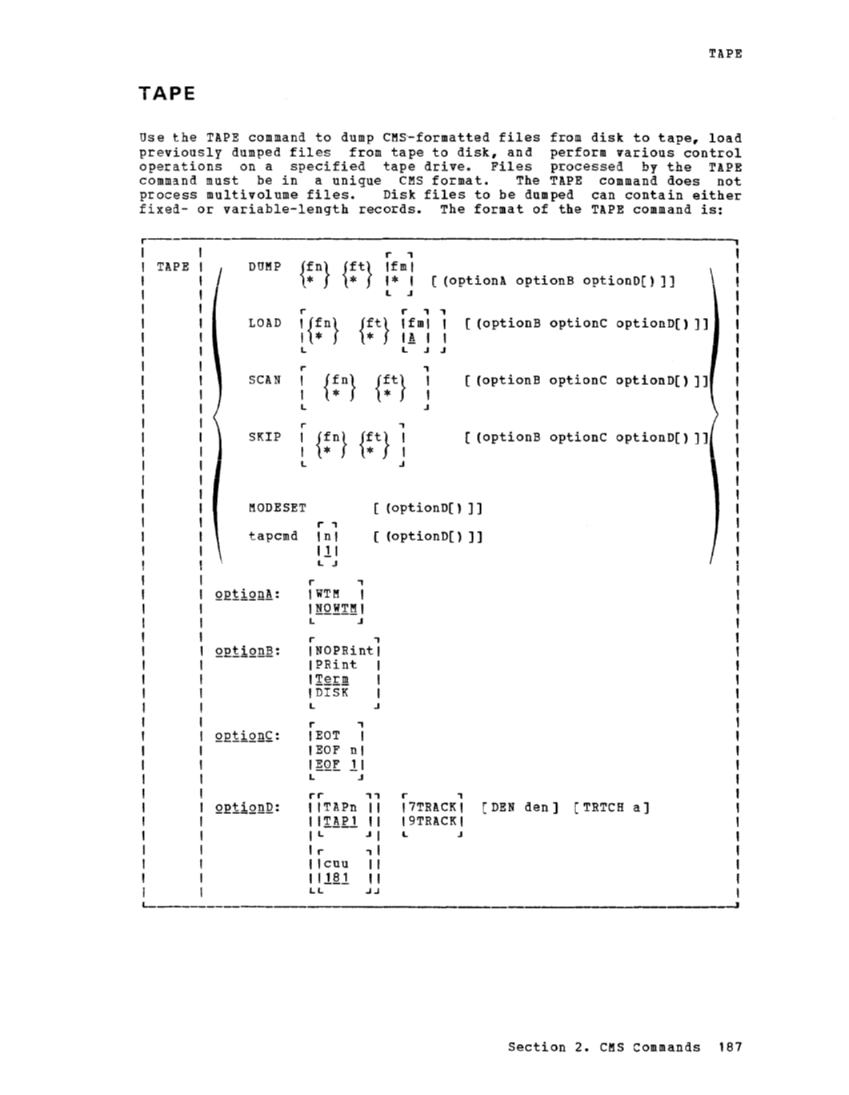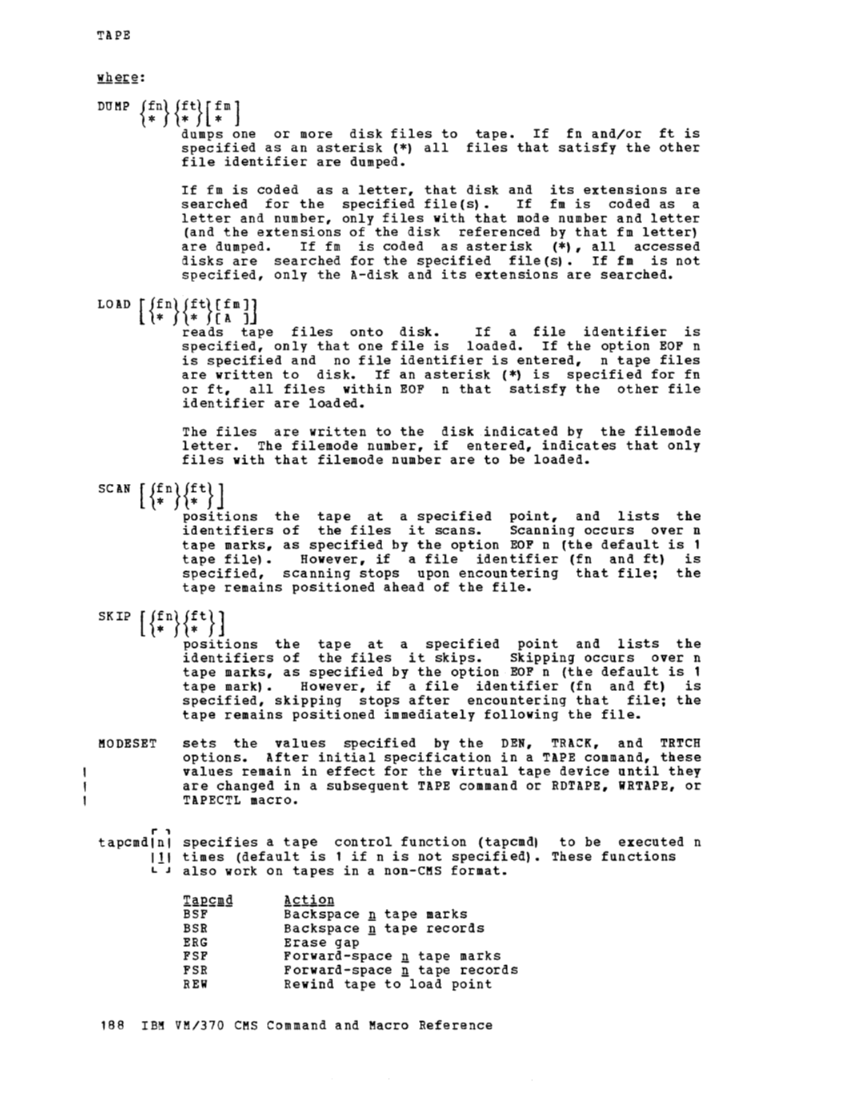previously dumped files from tape to disk, and perform various control
operations on a specified tape
command must be in a unique
process multivolume files. Disk files to be dumped can contain either
fixed- or variable-length records. The format of the
r
r r , ,
L L .J .J
tapcmd
[ (optionD[)]]
[ (optionD[) ]]
L
L
[DEN den] [TRTCH a]
\
________________________






















































































































































































































































































































































































































